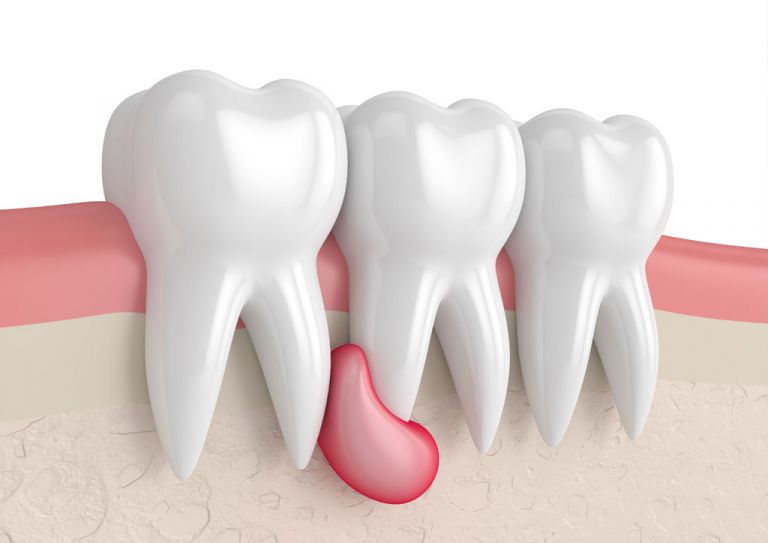-
Dental surgery
Root tip resection
Root tip resection | Apicoectomy
If a tooth that has been treated with a root canal develops symptoms again, further clarification is required. An X-ray usually shows bone loss around the root tip as a sign that the inflammation has returned. Since this inflammation represents a bacterial focus in the body and affects the entire organism via the bloodstream, and can even cause an acute abscess, treatment is urgently required.
Causes of inflammation
The cause of the renewed inflammation is usually remaining bacteria in the root canal system of the tooth. Even with optimal root canal treatment, these cannot be completely eliminated because the root of the tooth, especially in the lower third of the root, has various side canals that cannot be completely covered by root canal treatment. In addition, some teeth have additional root canals that may not be visible on normal X-rays. In order to identify the causes of recurrent inflammation and to be able to initiate adequate treatment, it therefore makes sense in certain cases to use special, three-dimensional imaging for further diagnostics.
If the consultation shows that tooth preservation by means of WSR is possible, the surgical procedure will take place in the next appointment.


Surgical intervention
In this procedure, a small incision is made in the gum to gain access to the diseased root tip. The infected area of the root tip is cut off and removed together with the inflammatory tissue. The shortened root tip is then examined with the aid of a surgical magnifying glass for leaks in the root filling and other causes of the recurring inflammation. This is followed by the gentle removal of the lower part of the root filling, using ultrasound (piezo). The root canal system is carefully disinfected and then filled tightly (so-called retrograde root filling) to prevent a new infection. Finally, the access to the root tip is sealed with a collagen material to support bone healing. After six months, the dentist takes a small X-ray to check the bone healing. If healthy new bone tissue can be seen around the root, the tooth is healed.
Of course, we can also perform this treatment under i.v. sedation at your request.
Apex root resection is the last attempt to save a tooth. In some cases, this may unfortunately no longer be possible. We will be happy to advise you about alternatives in this case during our consultation.
This might also be of interest to you
Dr. med. Sven Heinrich
Specialist for oral and maxillofacial surgery
plastic and aesthetic operations
– Focus of activities: implantology –
Address:
Friedrichstraße 63
(Entrance Mohrenstraße 17)
10117 Berlin
Opening hours
Mo. to Thu.:
08:00 – 18:00 o’clock
Friday by arrangement
Contact us
Phone: +49 (0) 30 / 84 52 48 88
Email: post@dr-heinrich.berlin
Appointment: arrange here



